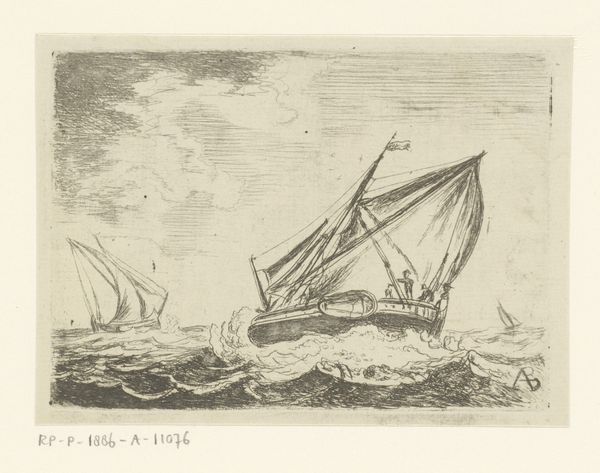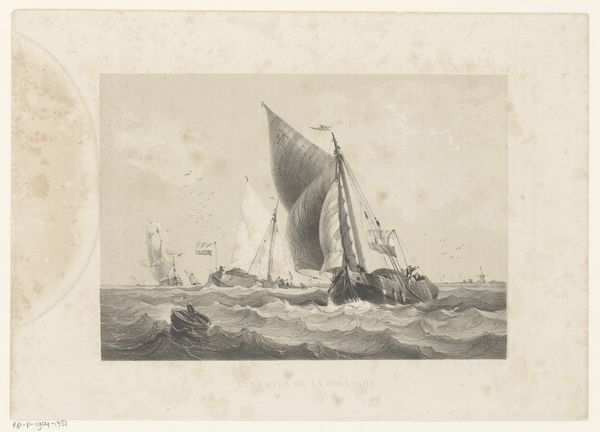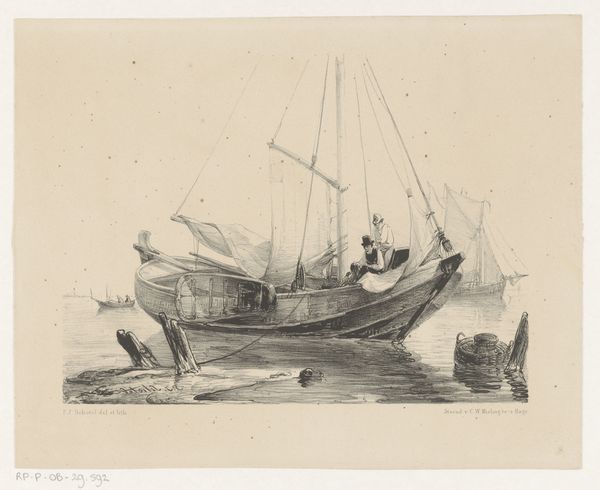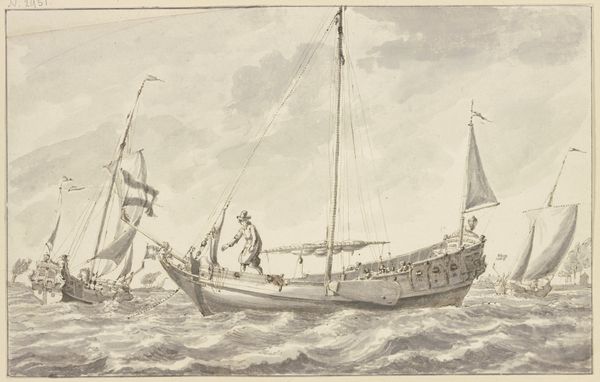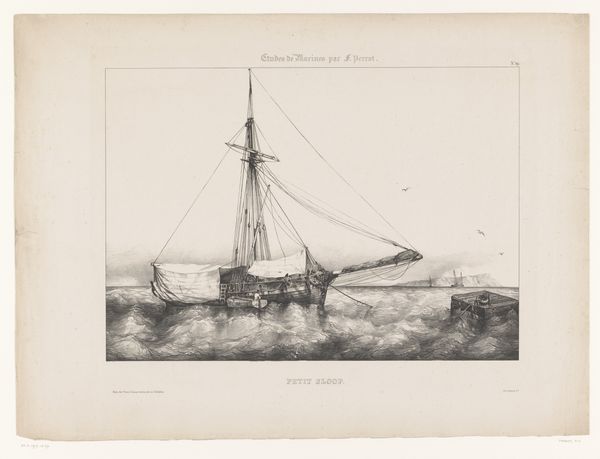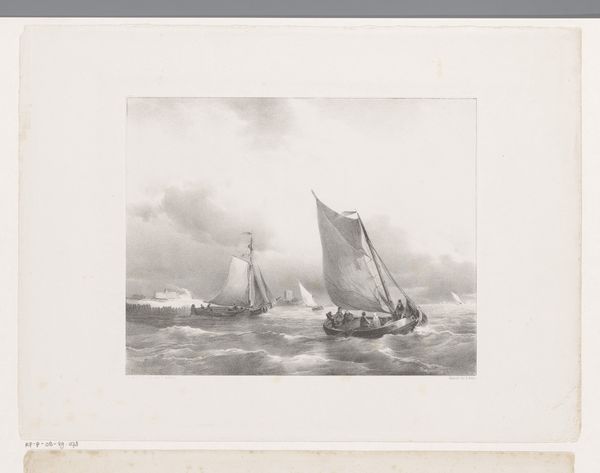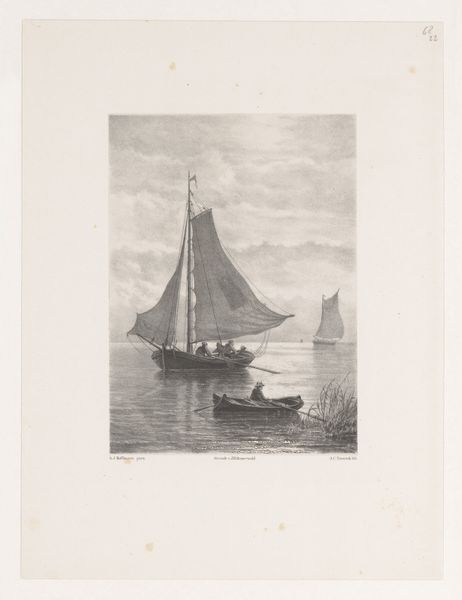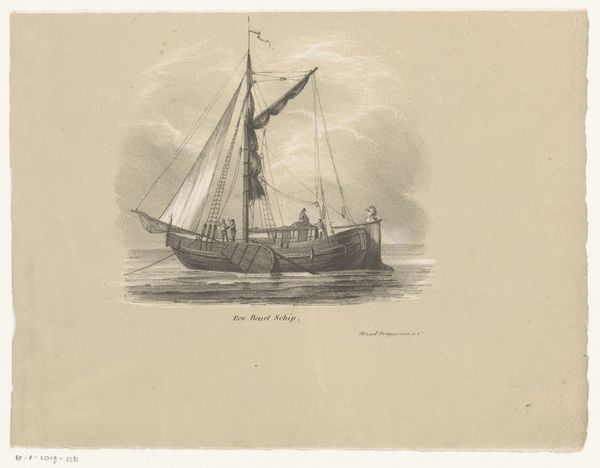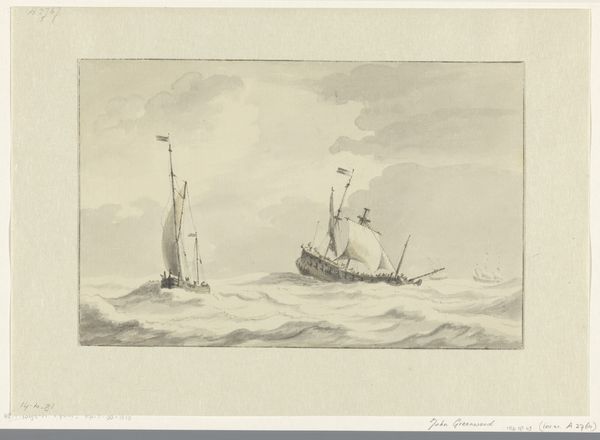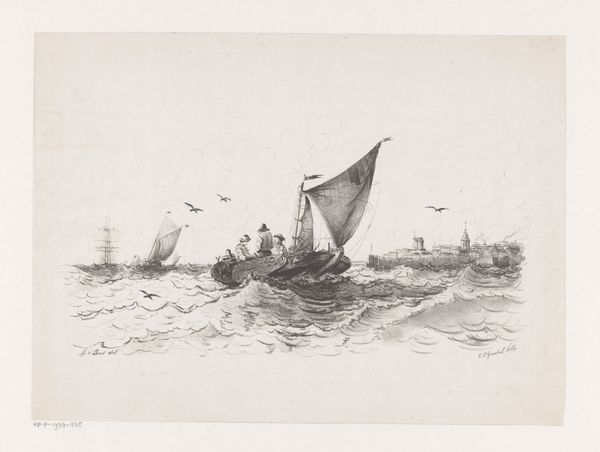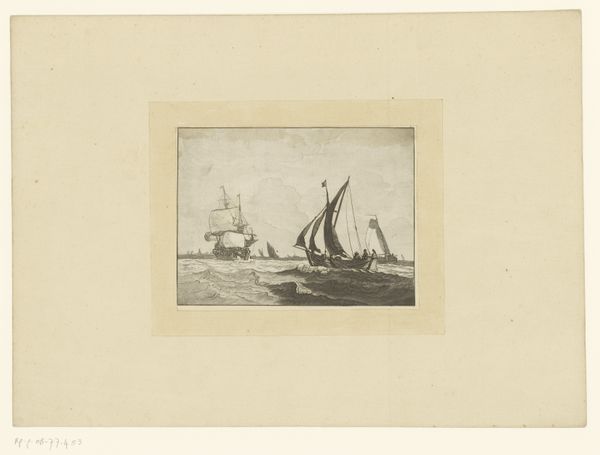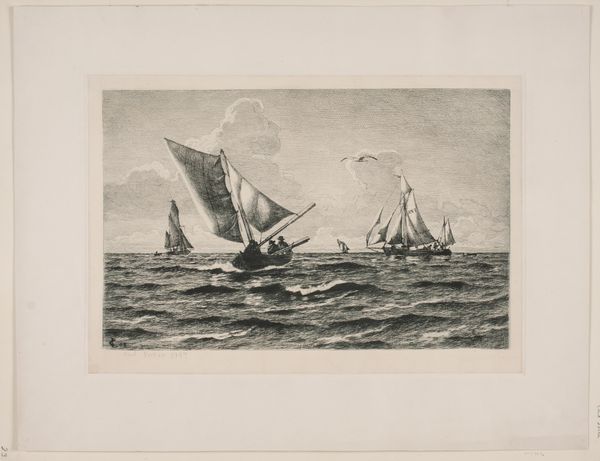
drawing, print, etching
#
drawing
# print
#
etching
#
landscape
#
line
#
history-painting
#
academic-art
#
realism
Dimensions: height 190 mm, width 265 mm
Copyright: Rijks Museum: Open Domain
Editor: Here we have "Vaartuig uit de vijfde eeuw," or "Vessel from the Fifth Century," created between 1847 and 1863 by Willem Jacob Hofdijk. It's a print – an etching, I believe. The lines describing the ship and waves feel so precise, almost scientific. What's your interpretation of this work? Curator: I see a fascinating example of how the romantic fascination with history was mediated through industrial processes. Consider the materiality of this etching: the very act of mass-producing an image of a fifth-century vessel speaks to the nineteenth-century's complex relationship with the past. The 'realism' you mention is also telling – it is about representing, for a consuming public, a specific vision of labor, and historical production of that vessel. Editor: So, the etching itself is almost like a product mirroring the ship it depicts? A representation, produced using new means? Curator: Precisely. And who was the intended audience for such prints? The rise of the middle class fueled a demand for historical and landscape imagery. We can analyze it as part of a cultural moment defined by changing means of art consumption and new visual ways to depict the past through a nostalgic lens. Consider where this print would have been displayed - a bourgeois home, perhaps? Editor: That's a helpful perspective. It shifts the focus from just the image to its production and how it would have been consumed. Now I'm wondering about the etcher's own labor. Curator: Exactly! It's not just about the finished artwork, but also about revealing the artist's labor. Editor: This makes me consider how an artwork can become both an idealized depiction and commodity that could be consumed. Thanks for the materialist insight! Curator: My pleasure. Considering artwork as material objects enmeshed in social and economic processes is something that brings you different understandings of history.
Comments
No comments
Be the first to comment and join the conversation on the ultimate creative platform.
